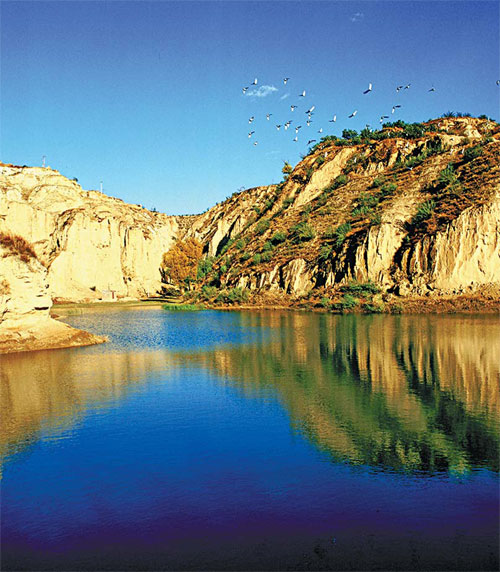Zhangjiakou ready to rise again
Diverse city harnesses new energy, eco-friendly industries to maintain growth, Li Yang reports.
Zhangjiakou entered the international spotlight after jointly applying to hold the 2022 Olympic Winter Games with Beijing.
Zhangjiakou is about 200 kilometers to the northwest of Beijing and Tianjin, two of the largest cities in China, but it is largely unknown to foreigners.
Zhangjiakou has long been a crossroads in China, connecting the Han people in the south, Mongolian people in the north, Muslim people in the west and Manchurian people in the east.
The city was a melting pot of different cultures and its financial sector, with the private banks as the representative, boomed.
The Great Wall was built during eight dynasties by 10 states since the Warring States Period (475-221BC) across Zhangjiakou's territory and served as a defense when necessary.
The rise of China's international maritime trade after the early 19th century represented the beginning of Zhangjiakou's decline as an inland trade center.
The railway was the main transport channel to get coal produced in Shanxi province to Bohai Bay. It was the first railway designed and built by the Chinese and was considered a construction wonder because of the complicated landforms it had to cross.
Internationally known as Kalgan, Zhangjiakou had a thriving economy, and was one of China's most important cities in the late Qing dynasty (1644-1911) and after the 1920s.
After the establishment of the People's Republic of China in 1949, Zhangjiakou didn't adopt the reform and opening-up policy due to its vital military position in the country, which to some extend affected its economic development.
From the late 1990s, East and Central China transformed its economic growth model in an environmentally friendly way, which gave Zhangjiakou another chance to boost its green economy.
Regions with well-preserved ecology and new energy potential in wind and solar power, like Zhangjiakou, become the focus of government plans.
Zhangjiakou's landscape is diverse as it is perched on the transition zone between the North China Plains in the south and the Mongolian Plateau grasslands in the north.
Zhangjiakou is home to 4.68 million residents and boasts the cleanest air in North China.
Its forest coverage rate is about 37 percent, which is much higher than the national average of 20 percent.
Beijing and Heibei province spent more than 10 billion yuan ($1.7 billion) to build a cloud computing industry park in Zhangjiakou, which is the largest cloud computing and data center industry base in North China.
New energy industries, such as solar power and wind power, are one of the key industries for Zhangjiakou.
The city is also building China's largest photovoltaic power generation project, which has a 9.2-million-kilowatt capacity, and one of the country's largest wind power plants, which has a 6-million-kilowatt capacity.
The pollution-free vegetable and grain production and processing industries in Zhangjiakou take advantage of the large consumption markets in Beijing and Tianjin.
Tourism and wine have also become pillar industries of Zhangjiakou. Last year, the city's gross domestic product was 130 billion yuan, which marked an annual 8 percent growth, and the average annual capita GDP was about $4,800. The fast development of environmentally friendly industries has helped Zhangjiakou become a function area for water resources along the Beijing, Tianjin and Hebei economic belt and also an ecological safeguard for Beijing.
Contact the writer at liyang@chinadaily.com.cn
|
Clockwise from above: The spectacular natural landscape in Nihewan in Zhangjiakou. |



















